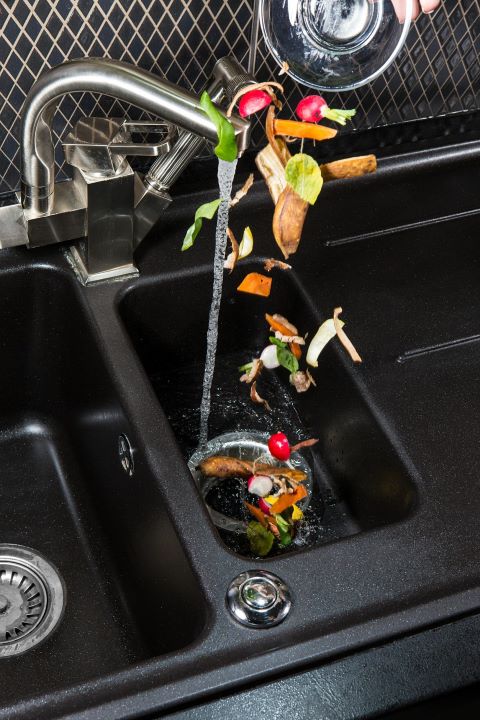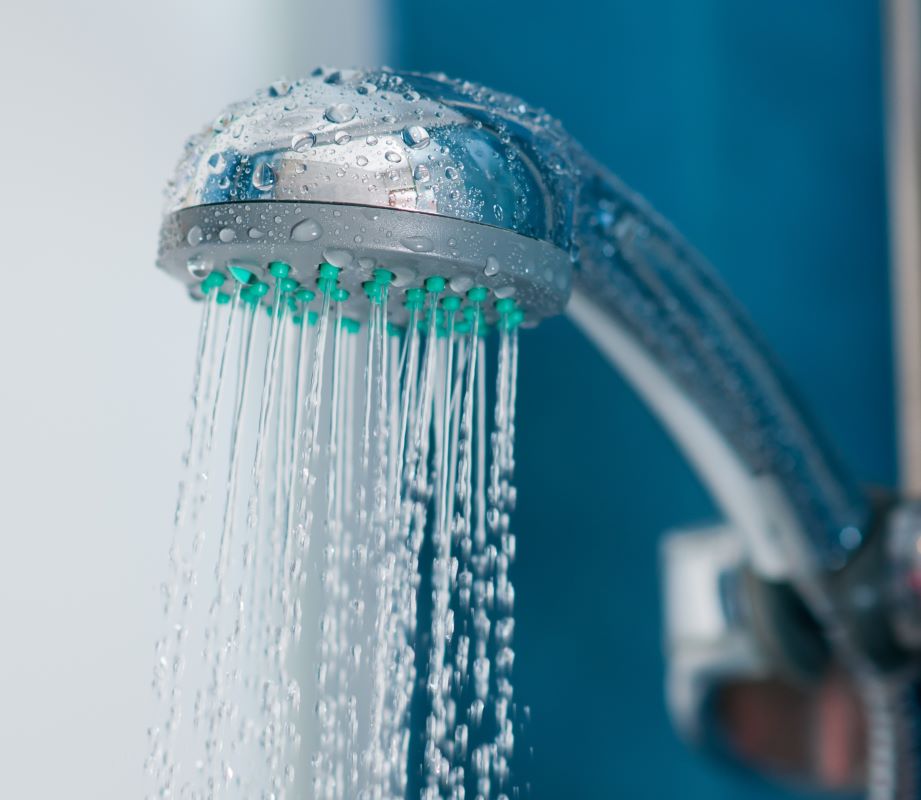Plumber in Williams
Since 1994, Mountain High Plumbing has remained a well-known name in the Williams region. We take pride in our humble beginnings as a family-centered plumbing company, founded and run by Jim Velez, Sr., his wife Alana, and their son Jimmy. With Jim Sr. and Jimmy's diverse skill sets, our local, family-owned business consistently delivers top-notch service to our customers. At Mountain High Plumbing, we guarantee customer satisfaction.
We owe our stellar reputation to the fact that our seasoned Williams plumbing company has aimed for excellence since day one. Our unique approach blends decades of experience with exceptional workmanship and competitive pricing. Our team of bonded, insured, and licensed plumbers is renowned for their integrity and trustworthiness. In fact, our team is full of the most hardworking, seasoned, and committed individuals you’ll find anywhere. When you contact our Williams plumbing service, you'll quickly learn why we are the premier plumbing business in Northern Arizona - so don't hesitate to call us today!

Dealing with Pipe Leaks
If any of the scenarios sound familiar, continue reading to find out why.I've noticed damage to my pipes or fixtures.
A fixture may develop a crack due to physical impact, necessitating prompt repairs.I have an emergent, severe, and sudden pipe leak.
Plumbers can’t all be the best, and the unfortunate truth is that badly installed pipes can lead to major problems for homeowners. It's essential that each pipe and connector be expertly and diligently installed, just as our professionals do at Mountain High Plumbing. Reach out to us at (928) 774-3593 for 24-hour emergency plumbing services, and we'll help you resolve this messy and potentially disastrous situation.I have tree roots growing close to my home, an extreme drop in water pressure, and/or a sinkhole or wet areas in my yard.
Tree root systems are complex and can easily obstruct residential water lines. Plumbers must conduct comprehensive pipe inspections and promptly address any invasive root issues.Water is pooling near my appliance(s).
If you notice condensation on the appliance, it's likely caused by the deterioration or breakage of the rubber sealant around the appliance's connections. If you also observe water leaking from the supply line, it's probable that the water connectors between your appliance and the water supply are damaged or loose due to wear and tear or shifting. Diagnosing these issues on your own can be challenging, so don't hesitate to reach out to Mountain High Plumbing for assistance.I have noticeable water supply problems or my water is draining slowly.
Nature is inherently unpredictable, and natural disasters such as earthquakes, floods, and other calamities can lead to ground movement and shifting. Consequently, pipes can bend, separate, twist, or crack. In the aftermath of such disasters, it is imperative to have a plumber complete inspections and comprehensive repairs to rectify any issues.My water has a bad smell, noticeable discoloration, or a bad taste.
Galvanized steel pipes last about 20 years, and brass pipes have an average lifespan of 70 years. Plumbing components and pipes deteriorate, corrode as a result of mineral buildup or pH imbalances, or begin to rust as they age. If left unchecked, you may also experience pipe damage, leaks, and other issues, so contact your preferred plumbing professional immediately.I notice a banging or ticking sound coming from my pipes, especially when I'm running hot water.
Pipe joints include multiple components and are exposed to continuous water flow, which makes damage to these joints relatively common. Such damage can result from extreme temperatures, high water pressure, or aging, and it often necessitates joint replacement.I have a water leak in conjunction with a running toilet, damaged appliances, and/or a high water bill.
Pipes are built to endure a variety of stresses, but high water pressure can cause them to burst or leak. To either preempt or eliminate a problem, our diagnostic testing will involve assessing your household's water pressure.My pipes have burst but aren’t frozen, toilets are overflowing, or drains are clogged.
Your plumbing lines can become clogged with an air handler drain pan obstruction, gutter debris, chemicals, hair, and a slew of other things. These significant obstructions can lead to urgent plumbing issues that require immediate attention.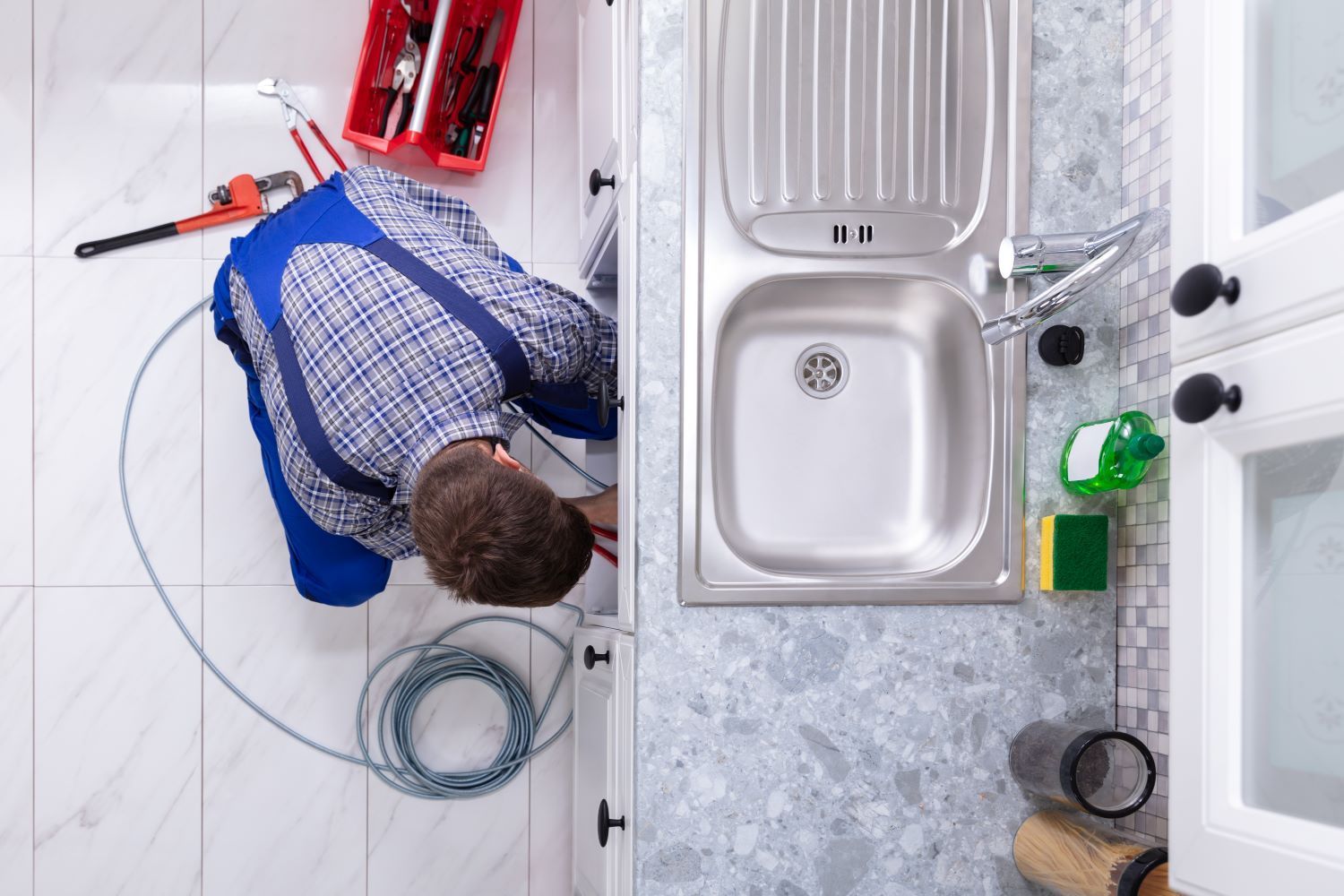
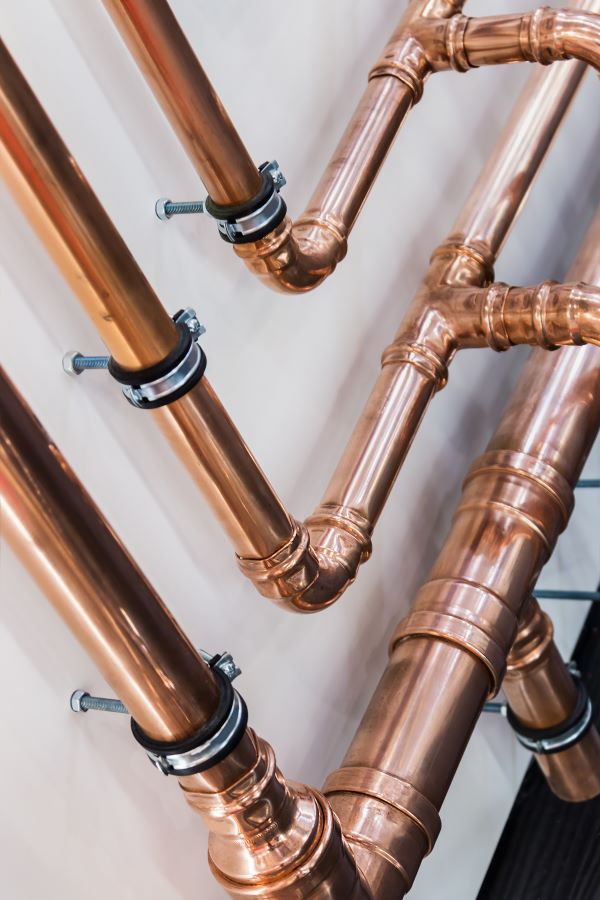
The Top 5 Most-Used Plumbing Pipe Materials
PVC Pipes
PVC is a popular choice over galvanized steel piping due to its cost-effectiveness and durability. It's frequently utilized for waste lines, though it is not the most suitable option for high-pressure water applications.Copper Pipes
Copper pipes, celebrated for their ease of cutting, remarkable durability, and chemical stability, are a popular choice for household fixtures like sinks, showers, and tubs - albeit at a premium cost compared to other options. They are often used for water lines in homes.CPVC (Chlorinated Polyvinyl Chloride) Pipes
CPVC pipes do have their limitations. They are unable to endure high temperatures, rendering them unsuitable for locations with temperature fluctuations. Their brittleness compounds these drawbacks, and they come at a price approximately double that of standard PVC alternatives. However, despite these shortcomings, this durable and robust polymer remains easy to install and non-corrosive, surpassing copper piping in those ways.Cast Iron Pipes
This piping material is deemed obsolete due to a number of downsides, including the fact that it causes several difficulties that can be costly for homeowners, readily corrodes, inevitably leads to sewer backups, and deteriorates gradually. Because of its durability, damage resistance, and convenience, it was previously a popular choice, and our plumbers near you commonly see it in sewage drain lines of homes built in the 1970s and 1980s.PEX Pipes
This piping is available in three colors, each of which serves a specific purpose: blue for cold water, red for hot water, and white for water of any temperature. Our highly experienced local plumbers appreciate PEX piping because it is extremely durable, easy to bend, and practical, making it capable of serving many purposes. This material is not only robust and cost-effective, but also easily expandable to accommodate various plumbing needs.How can pipes be insulated?
Considering the individual plumbing layout of each home, your plumbing contractor will initiate the assessment by identifying the best approach for insulating your pipes. This typically involves choosing the right insulation material, and may also include options like heat tape or heat cables to protect pipes situated in crawl spaces, unheated attics, or exterior walls. When you reach out to our plumbing service in Williams and implement these solutions, your pipes will be effectively ready to withstand chilly temperatures, thus minimizing the risk of freezing or bursting.My pipes are frozen - what do I do?
If your pipes are frozen, the most important thing to do is turn off the main water valve. After that, you have the option of calling Mountain High Plumbing or attempting to defrost them first. If your water meter freezes, your only choice is to contact your water company - otherwise, catastrophic damage can occur. To avoid an expensive and complicated plumbing repair, it's critical to be logical and proactive.Dealing with Frozen Pipes
When and where might my pipes freeze?
The greatest risk of pipe bursts comes with extended exposure to extremely low temperatures, potentially freezing water within as few as six hours. The most significant danger arises when temperatures plummet below 20 degrees, although pipes are generally susceptible to freezing below 32 degrees. The most frequent locations for pipe freezing are exterior walls, attics, and crawl spaces.What proactive steps can prevent frozen pipes?
To significantly lower the risk of frozen pipes and the related problems, our insured plumbers recommend taking specific precautions. It's a good idea to keep the cabinet doors under your sinks open and maintain an indoor temperature of 55 degrees or higher to keep your pipes warm. Before the cold weather arrives, remember to shut off the outdoor spigots and drain the lines. We also suggest regularly using your faucets and allowing a small stream of cold water to run from a distant faucet to ensure proper circulation. Furthermore, consulting your plumber about insulating your water lines and tank is a proactive step. By following these guidelines, you can keep your plumbing in excellent working condition throughout the winter months.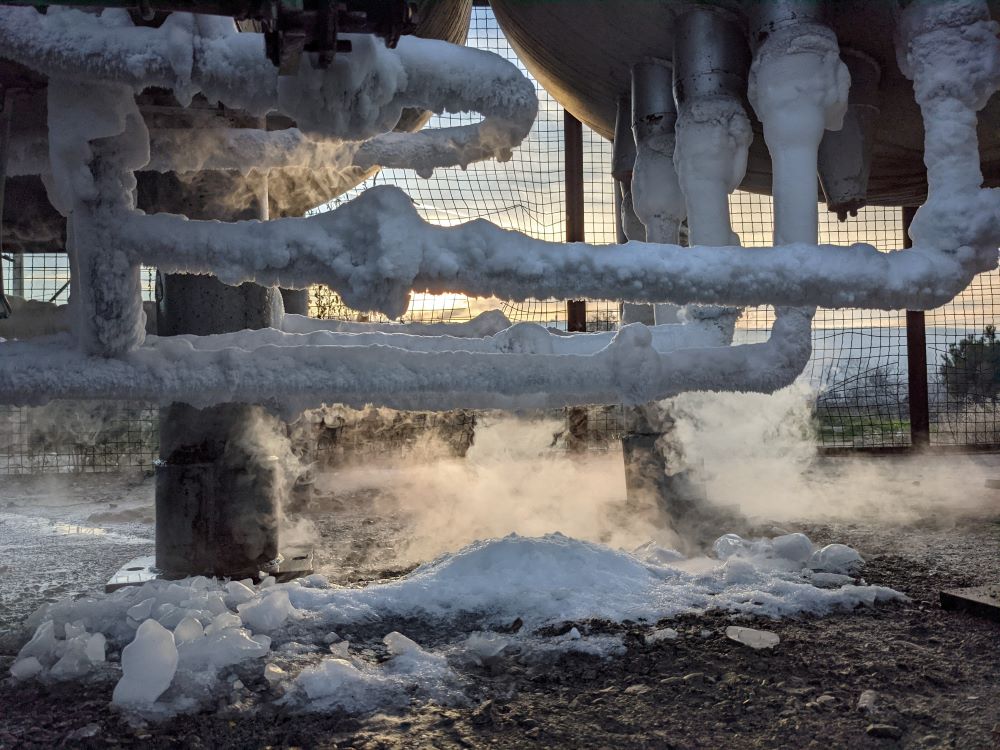
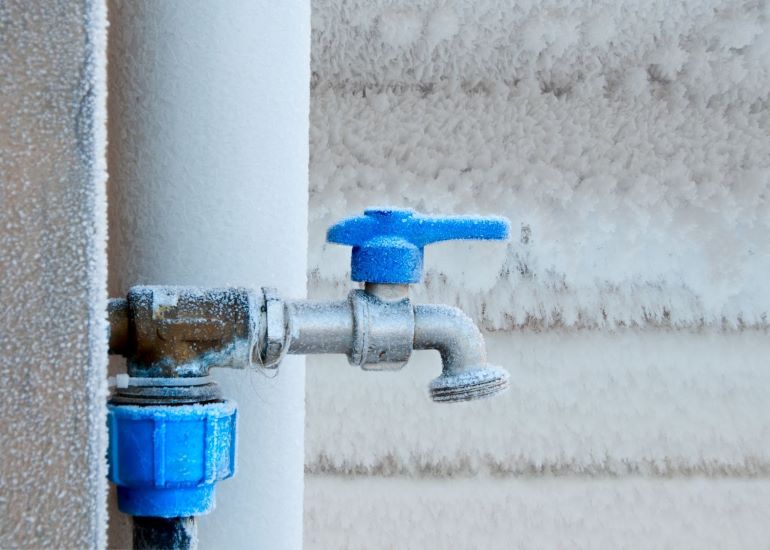
How can I thaw my frozen pipes?
Before trying to thaw your own pipes, keep in mind that there are risks involved, including melting or cracks when pipes are overheated, water damage, and more. If you are unsure about thawing them yourself, or if you suspect a pipe has already cracked or burst, please call our 24/7 plumber at (928) 774-3593 immediately. You can also attempt the suggestions below, but if the plumbing problem isn't remedied by these methods, you should call an emergency plumber. Mountain High Plumbing is ready to assist you in your hour of need.- Have a discussion with your neighbors. If they describe the same problems, it could suggest a water main break rather than frozen pipes.
- Turn off the main water supply.
- Open all the faucets in your home.
- Carefully use a blow dryer to warm the pipes, taking precautions to avoid any flammable materials.
- Gradually turn the water supply back on and thoroughly assess. Check for pooled water, which could indicate a cracked or burst pipe, as well as any visible cracks or leaks.
Dealing with Water Pressure Problems
If any of these scenarios sound familiar, delve into the possible reasons behind your low water pressure by reading on.My water pressure regulator has no reading or seems inaccurate.
Consider utilizing a water pressure gauge to get a precise reading of your water pressure. If this gauge and the regulator do not have the same reading or if the regulator has no reading at all, there is probably a problem with the regulator itself. Don't hesitate to reach out to Mountain High Plumbing for expert help in diagnosing or replacing your pressure regulator.My home has old pipes.
If your galvanized steel pipes have been in use for over 20 years, or if your copper pipes have aged more than 50 years, or your brass pipes are older than 40 years, corrosion is the most probable reason for your water pressure issue. We'll need to examine your pipes and potentially replace some of them to address the problem.I’ve noticed wet spots or pooled water on my property.
Leaking pipes can redirect water and result in reduced water pressure. If you notice these signs, it's essential to contact Mountain High Plumbing before the problem escalates further.Neighboring homes or businesses have the same water pressure problem I’m experiencing.
If this is the case, there is probably a problem with your water supplier. Call your water company to express your concerns.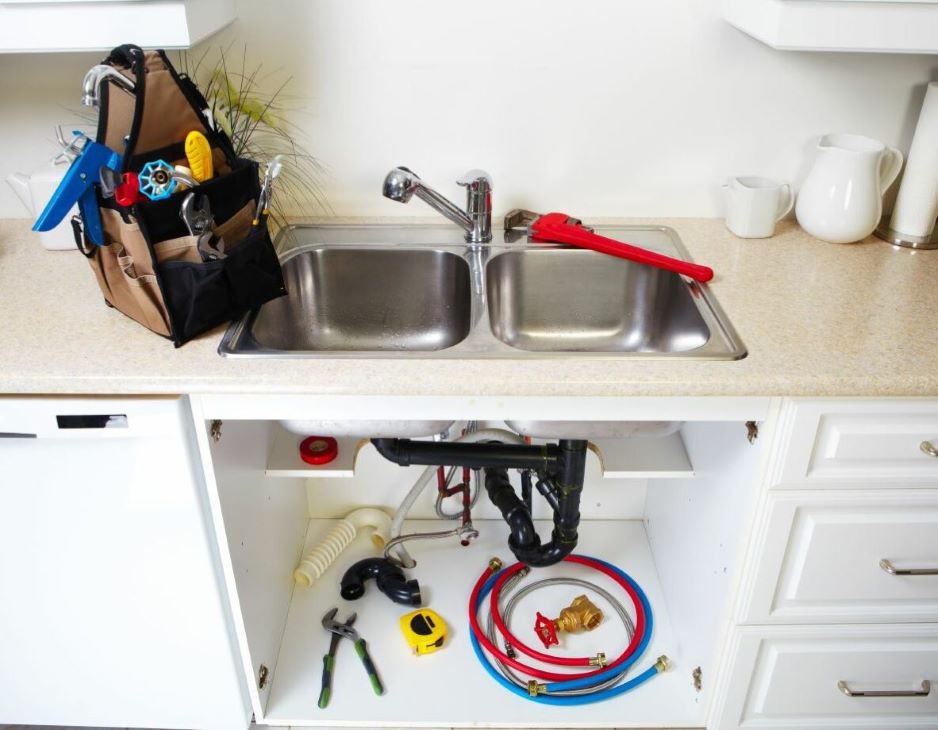
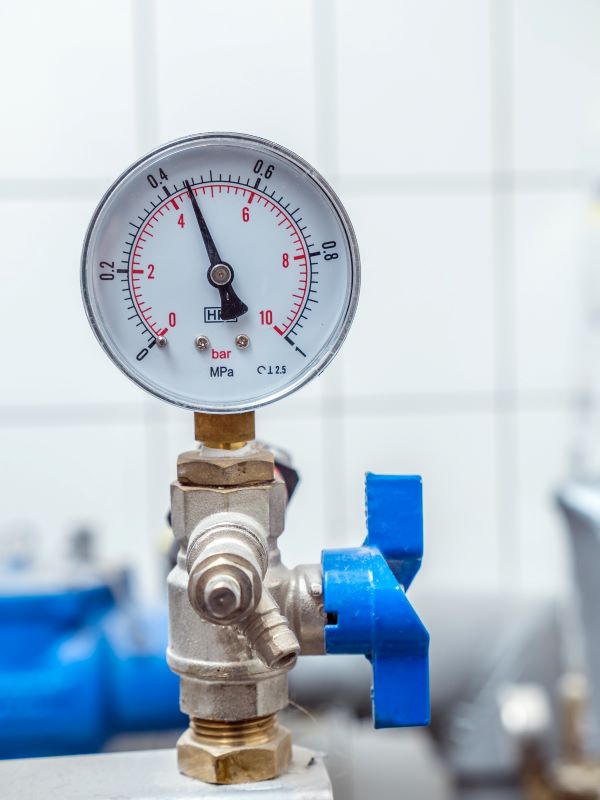
I’m only noticing a water pressure issue with a single fixture in my home.
If you only observe low water pressure at one fixture or faucet, the fixture is most likely the source of the problem. It might be necessary to have a skilled plumber clear any clogs or buildup, or in some cases, you may need to replace the entire fixture if it's malfunctioning.None of these statements apply to me, but I still have low water pressure.
If you've examined everything and still have a low water pressure problem, your main house shutoff valve or water meter valve may not be fully open. The water meter valve, which is owned by your local water utility, limits the amount of water that enters your property. The main house shutoff valve, which is normally located near the city supply line in your home, also performs an important role. If the main shutoff isn't the issue, contact the city to have your water meter valve inspected.My area has changed the local water pressure regulations.
If you've already discussed changes in water regulations with your water supplier and identified them as the cause, it's a good idea to consult with your plumber about installing a water pressure booster. Before installing the booster system, we'll perform a comprehensive inspection of your plumbing to rule out any other potential issues.Dealing with Kitchen Problems
If you find any of these situations familiar, let's delve into the potential reasons behind them.There is a leak in the cabinet under my kitchen sink.
The leak often originates from the joint in the drain pipe. We've encountered cases where water supply connections fail, resulting in a leak. Human error can play a role, particularly when hand-tightened fittings at faucet and water supply pipe connections aren't adequately secured. Defective or worn caulking or seals can also permit splashed water to leak into the cabinet below. Rest assured, we can assist you in troubleshooting and addressing any of these prevalent concerns.My sink is draining slowly.
Because kitchen drains are frequently clogged by food waste, foreign objects, soap scum, or grease, your experienced plumber may need to snake the obstruction after opening your drain trap.My kitchen faucet is leaking.
Many kitchen faucets are equipped with a single-valve cartridge to regulate the flow of both hot and cold water. If you're experiencing a dripping faucet, it's possible that you need to replace this cartridge.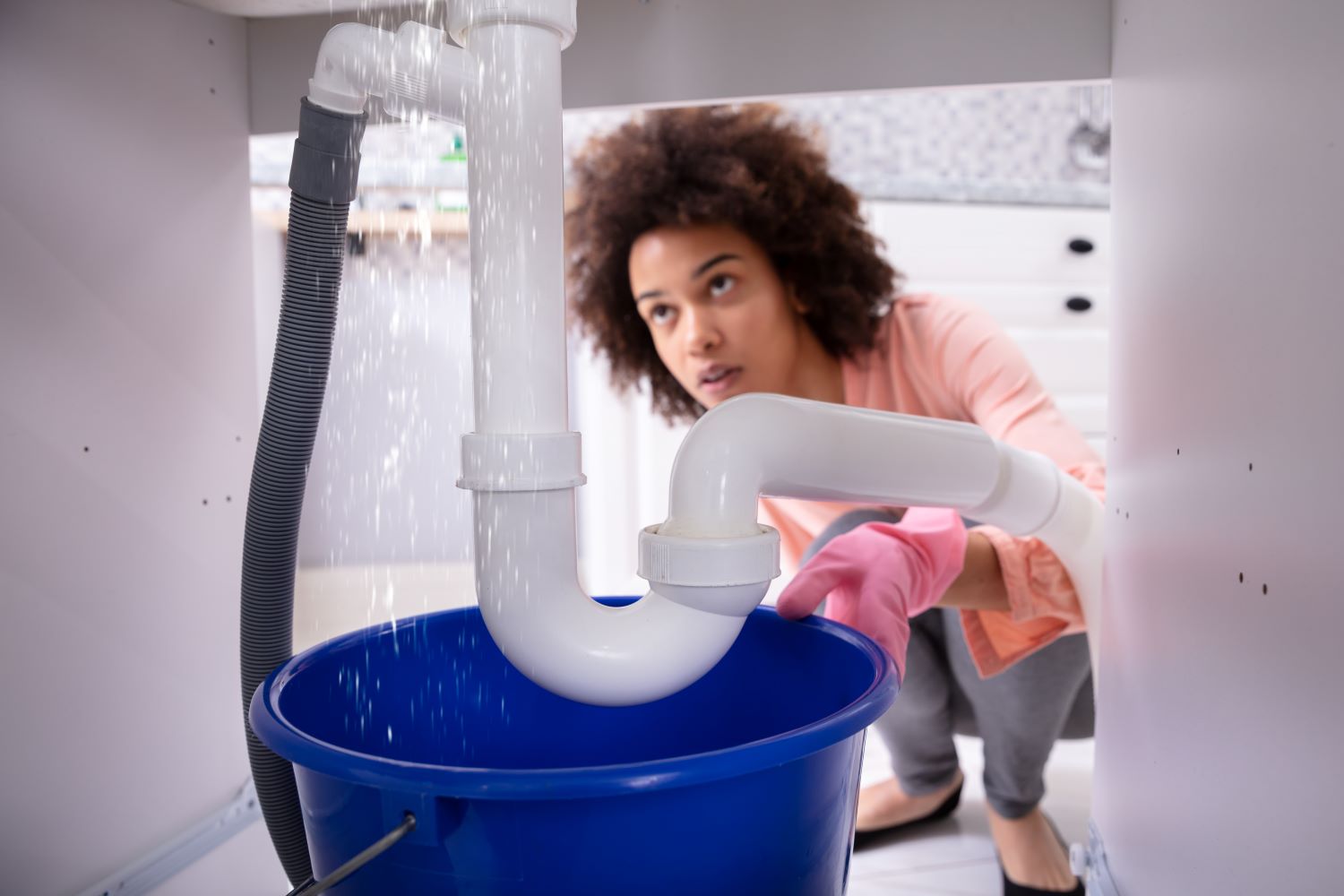
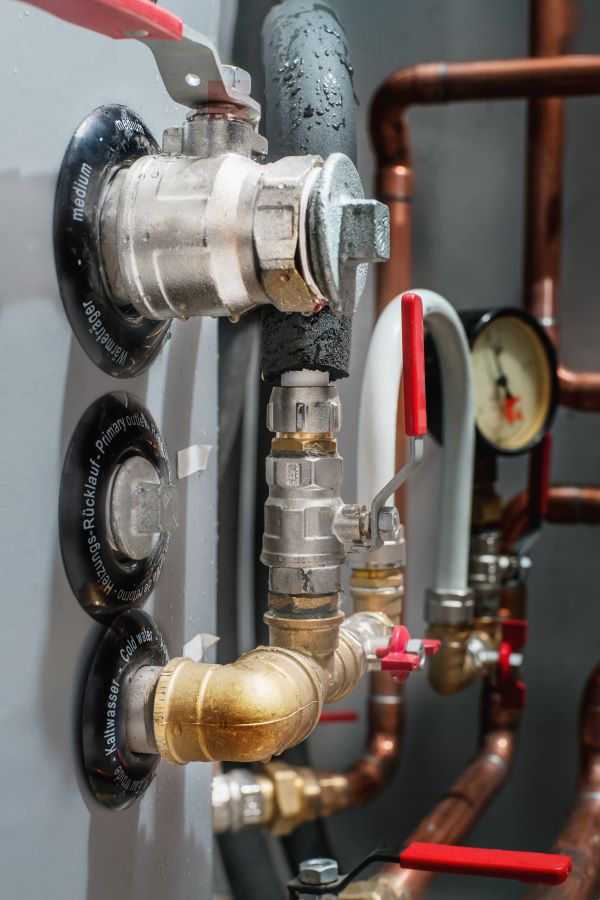
All About Gas Piping
Gas piping systems utilize pressure to transport natural gas to a destination. Natural gas flows through a network of pipelines from areas of higher pressure to lower pressure regions. It goes through a pressure regulator, then enters the distribution system and eventually reaches your residence. This journey commences at the mainlines and progresses through service lines, which are owned by gas utility companies. However, everything downstream within your property is your responsibility. When you operate a gas stove or furnace, the gas pressure slightly exceeds the air pressure, enabling the heating unit to ignite. The most common gas piping materials are:
HDPE
While natural subsurface objects like pebbles or tree roots can frequently harm this material, the plastic lines remain flexible and cost-effective. Similar to PVC, HDPE demonstrates its reliability as an excellent option for buried outdoor pipelines.
PVC
PVC gas pipes are favored by many plumbers for their affordability, although some regions prohibit their use because they can be prone to breakage during installation. Nevertheless, they remain a cost-effective option for underground exterior pipelines thanks to their corrosion resistance and impressive durability.
Copper
It's important to note that in some areas, the use of copper pipes has been completely banned due to their limited lifespan of around two decades and stringent code regulations that restrict their usage in many locations.
Flexible Corrugated Stainless Steel Tubing
While flexible corrugated stainless steel tubing is simple to install, it is more prone to cracking, making it best suited for indoor gas piping applications. These flexible tubes are useful in restricted spaces or disaster-prone places.
Black Iron
This material is the preferred option for both indoor and outdoor gas pipelines. Its longevity, strength, and heat resistance guarantee an airtight seal. Nevertheless, black iron is susceptible to corrosion over time, and the sealant applied to it tends to deteriorate. If your gas system relies on this material, regular maintenance is highly recommended.
Galvanized Steel
Galvanized Steel pipes have become less prevalent in contemporary construction, mainly found in older buildings due to their extensive labor requirements. It is a sturdy and energy-efficient piping choice, and it is frequently employed for water supply and both exterior and interior gas lines.The Power of Hydro Jetting
Hydro jetting is a cutting-edge technology for completely cleaning your plumbing system that uses a special, high-pressure water hose. The procedure begins with a preliminary check using an advanced camera to detect any existing damage that could prevent the use of hydro jetting equipment. The hydro jetting service commences once we have determined that your system is not damaged. This requires expert positioning of the high-pressure line and connection to a professional-grade water tank. Ensuring the ideal insertion point for the hose is a painstaking procedure that should never be skipped.
We spring into action, harnessing the incredible force of water pressure, our robust hose, and the unwavering support of gravity. This dynamic synergy moves water through the system at about 20 gallons per minute. The water surges through backward-facing jets, propelling the nozzle through the pipes, and a forward-facing jet further aids in dislodging debris. Hydro jetting is not limited to tackling clogs alone - it provides a comprehensive solution for eliminating grease, tree roots, mineral buildup, and any potential debris that could lead to future issues. When faced with a particularly stubborn clog, your trusted plumber is likely to recommend this technique to achieve the best possible results.
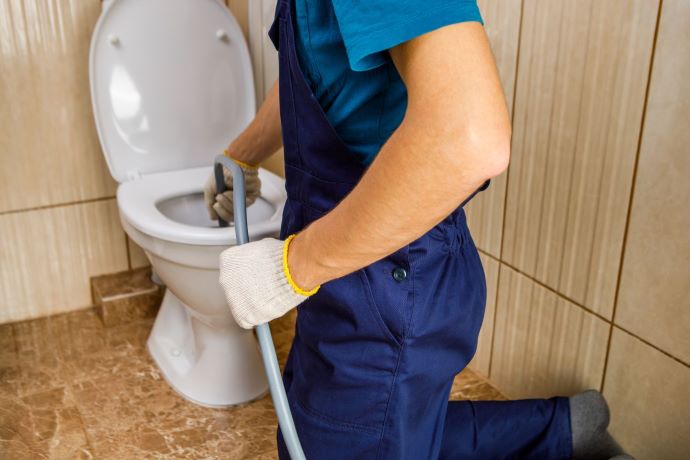
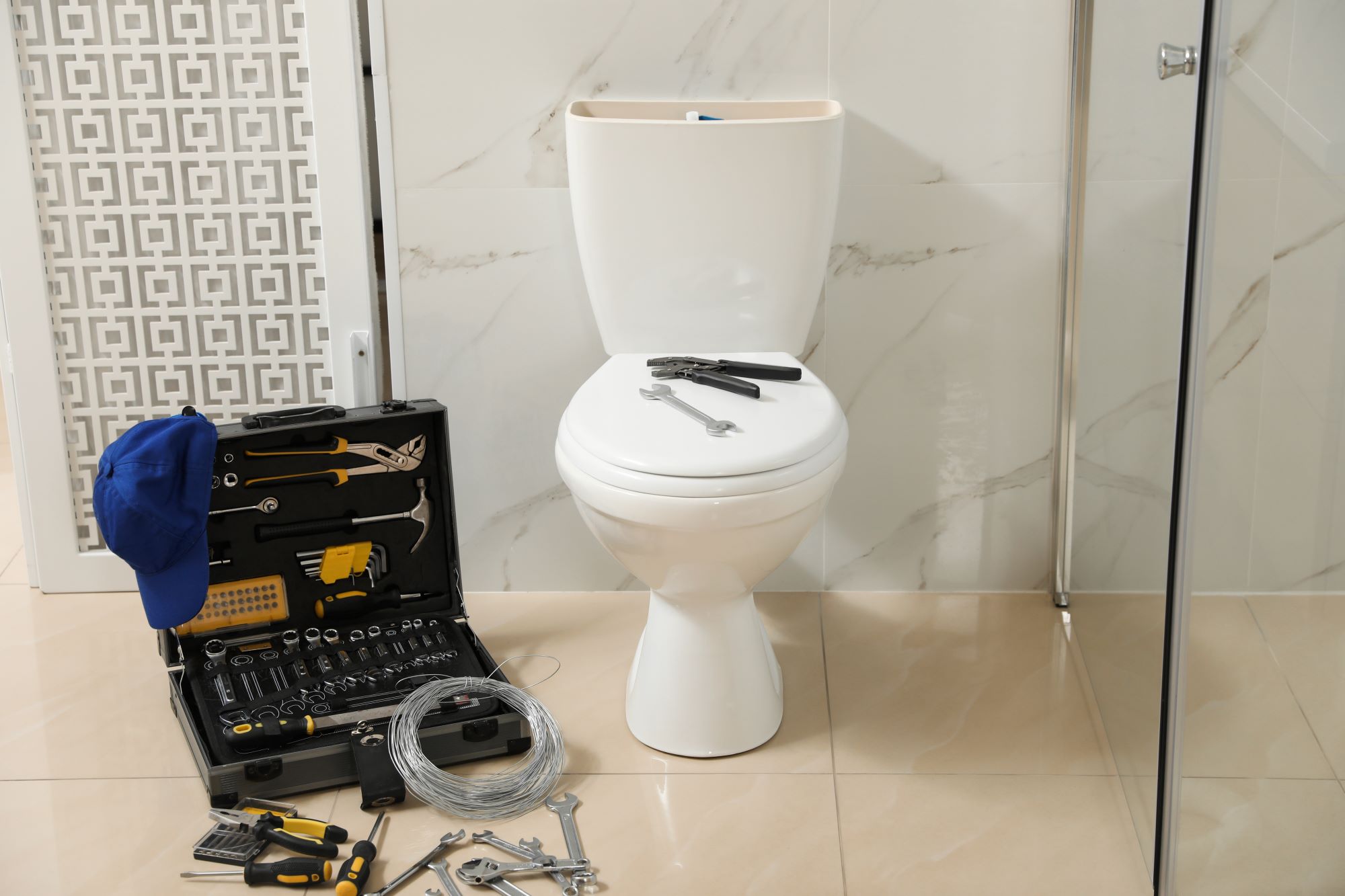
Dealing with Bathroom Sink Problems
There are several typical sink-related issues, and the following statements may resonate with homeowners facing these issues.My drain stopper isn’t working.
Stoppers are vital as they enable your drain to function properly, opening and closing smoothly. If the stopper is cracked or has a loose nut, it won't operate correctly and should be replaced.I have a leaky faucet.
A damaged washer, faulty valve seat, corrosion, general wear, or a faulty o-ring are the most frequent reasons for this problem. Our experts will swiftly identify the source of the problem and conduct any necessary repairs.My sink caulking is coming off.
Caulking around sinks can peel, develop mildew, mold, or crack due to prolonged exposure to water. We suggest re-caulking every five years to maintain a watertight seal.My drain is clogged or slow.
To start, examine your drain stopper to check for any accumulation around the horizontal pivot rod beneath the drain opening. If the stopper seems fine, it's probable that the blockage is due to soap scum or hair. For a professional diagnosis and the necessary repairs, don’t hesitate to get in touch with Mountain High Plumbing.There's an unpleasant odor coming from my sink.
If you smell rotten eggs, you most likely have a microbial infection in the sink overflow passage or drain. These infections can typically be resolved by using hydrogen peroxide (3%). Should the odor persist, please reach out to us for further assistance.Dealing with Toilet Problems
Our local plumbers in Williams are delighted to give some expert advice on how to handle some of the most frequently-encountered toilet problems.My toilet is running continuously.
It's possible that you're dealing with a flush valve leak at the base of the toilet tank. Another potential culprit could be a misaligned or defective fill valve.My toilet is clogged or flushes slowly.
The first step is to use a plunger and try to clear the clog. If a plunger proves ineffective, you might be dealing with a challenging clog that requires a plumber to employ a plumbing snake. As a toilet ages and collects debris, calcium, rust, or lime buildup, it may become more ineffective at flushing. In such cases, your Williams plumbing contractor can resolve the issue by installing a new toilet.My toilet is leaking around the base.
If you see water pooling around the base of your toilet during the day or right after flushing, it's likely due to a wax ring issue. Whether it's due to poor installation, wear and tear, or a defect, the solution involves draining the toilet tank, removing the entire toilet, and replacing the wax ring. In more severe cases of leakage, you might need to install a new tank and toilet.My toilet is overflowing.
If you encounter this problem, don't hesitate to reach out to Mountain High Plumbing for our swift plumbing services. If you see a valve connecting the toilet pipe to the tank, turn this off. If not, shut off your water supply until we have come to the rescue. This problem suggests a serious pipe clog, a blocked plumbing vent, a full septic tank, or a sewage problem.My toilet is leaking where the tank meets the toilet bowl.
If you observe this issue, your plumber will have to empty the tank, take it off, and replace a gasket.I have a water supply leak.
A continuous increase in water bills, decreased water flow, noisy pipes, or pooling water are all symptoms of this condition. After turning off your water supply, contact our plumbing service to assist you in avoiding major and severe problems.I need a new toilet installed.
When it comes to toilet installation, our experienced plumbers have it down to a science. We kick things off by removing the old toilet. Following a thorough inspection of the flange and the addition of a fresh wax ring, we'll carefully position your new toilet. We'll secure it with bolts and assemble all the components, including the seat, tank, and lid. If you've opted for a model with luxurious extras like a bidet, electrical features, or other special functions, we'll handle those installations with expertise. We won't sign off until we've meticulously tested for leaks and verified a flawless installation. Whether you're in the market for a one-piece, two-piece, double-cyclone, gravity-fed, pressure-assisted, waterless, comfort-height, dual-flush, or wall-hanging toilet, we’ve got you covered - so give us a call today to schedule installation!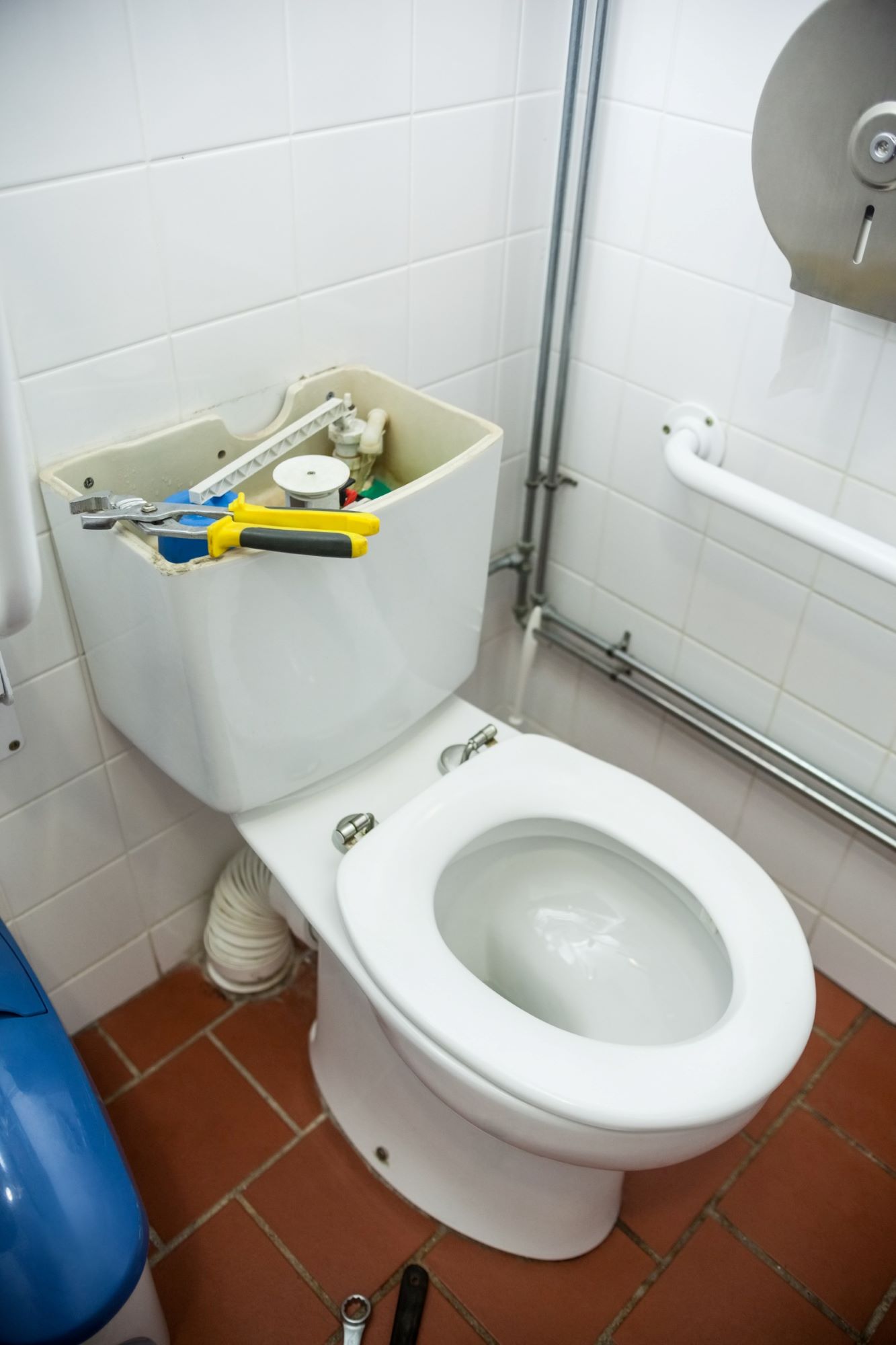
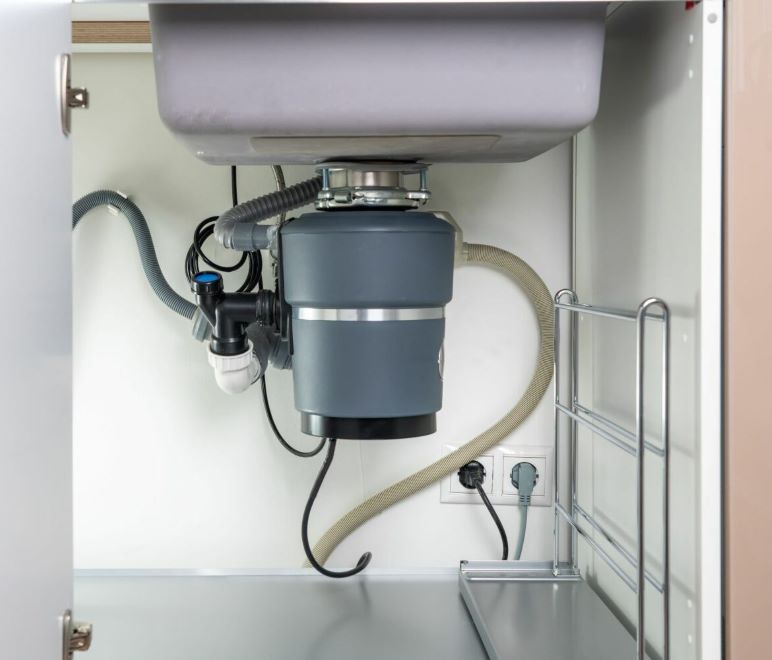
Garbage Disposal Installation
Here's how our skilled plumbers install garbage disposals:- Turn off the circuit breaker and handle electrical wiring with caution.
- Ensure proper installation of the drain flange.
- Position the gasket and mounting ring correctly.
- Provide support and securely fasten the disposal.
- Use pipe connections to secure the discharge pipe (P-trap) to the disposal outlet.
- Test for leaks by running the disposal and faucet, and tighten any bolts at the mounting and piping connection points.
Garbage Disposal Installation
Here's how our skilled plumbers install garbage disposals:
- Turn off the circuit breaker and handle electrical wiring with caution.
- Ensure proper installation of the drain flange.
- Position the gasket and mounting ring correctly.
- Provide support and securely fasten the disposal.
- Use pipe connections to secure the discharge pipe (P-trap) to the disposal outlet.
- Test for leaks by running the disposal and faucet, and tighten any bolts at the mounting and piping connection points.
All About Whole Home Water Filtration
To ensure safety, municipal water undergoes treatment processes, including copper-zinc KDF treatment, pre-filtration, and activated carbon treatment. Home water filters play a vital role in eliminating impurities like chemicals, heavy metals, and hard minerals. Filtered water not only enhances health, but also prolongs the lifespan of appliances, faucets, and plumbing.
Investing in a whole-house water filtration system is a prudent decision with numerous advantages. It ensures access to clean, delicious drinking water, removing concerns about contamination and saving money on bottled water while minimizing plastic waste. Furthermore, the filtering system eliminates limescale and mineral accumulation, lowering the likelihood of plumbing problems and costly repairs. Get rid of skin irritants, use less soap, and enjoy softer, cleaner garments. Overall, investing in whole-house water filtration improves your quality of life and increases your environmental consciousness while being cost-effective.
